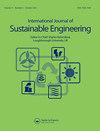在回购合同、垂直整合、零售商努力和碳足迹约束下,制造商和零售商之间进行协调的库存系统
IF 3.6
Q3 GREEN & SUSTAINABLE SCIENCE & TECHNOLOGY
International Journal of Sustainable Engineering
Pub Date : 2021-10-03
DOI:10.1080/19397038.2021.1986591
引用次数: 6
摘要
对地球气候系统的日益关注和节约原材料的日益重要性是供应链成员面临的主要挑战,这将引导公司实现可持续发展和“走向绿色”的使命。环境友好型库存管理是创造创新方法以实现绿色增长的最关键和关键决策之一。因此,在本研究中,我们分析了随机需求下制造商和零售商之间的报贩问题,以促进可持续和绿色增长方法。在我们的分析模型中,考虑了两种方式来满足零售商的需求。在第一种情况下,零售商在销售季节之前下单,因此再制造商将有足够的时间对退货进行再制造,并为零售商的需求提供回收材料。在第二种情况下,面对短缺,零售商将在销售季节开始后重新订购。因此,再制造商将没有足够的时间向零售商提供退回的材料,而零售商的订单将使用原材料来满足新产品。该模型旨在研究碳足迹约束、垂直整合、回购合同和零售商销售努力对再制造商库存控制系统的影响。并进行敏感性分析,提出结论和未来的研究方向。本文章由计算机程序翻译,如有差异,请以英文原文为准。
An inventory system with coordination among manufacturers and retailers under buyback contract, vertical integration, retailer’s effort and carbon footprint constraint
ABSTRACT The growing concerns about the Earth’s climate system and the increasing importance of saving raw materials are critical challenges that supply chain members mostly face, leading companies to sustainability and ‘going green’ missions. Environmentally friendly inventory management is one of the most crucial and key decisions that creates innovative methodologies to achieve green growth. Hence, in this study, we analyse a newsvendor problem among manufacturers and retailers under random demand to facilitate sustainable and green growth approaches. In our analytical model, two ways are considered to meet the needs of retailers. In the first case, the retailer orders before the sales season, so the remanufacturer will have enough time to remanufacture returned products and provide the retailer’s needs with recycled materials. In the second case, the retailer will re-order after the start of the sales season in the face of a shortage. So, the remanufacturer will not have enough time to supply the retailer with returned materials, and the retailer’s order will be met with new products using raw materials. The model intends to study the effects of carbon footprint constraints, vertical integration, buyback contract, and retailer’s sales effort on inventory control systems with remanufacturers. Furthermore, sensitivity analysis is performed, and conclusions and future research directions are provided.
求助全文
通过发布文献求助,成功后即可免费获取论文全文。
去求助
来源期刊

International Journal of Sustainable Engineering
GREEN & SUSTAINABLE SCIENCE & TECHNOLOGY-
CiteScore
7.70
自引率
0.00%
发文量
19
 求助内容:
求助内容: 应助结果提醒方式:
应助结果提醒方式:


